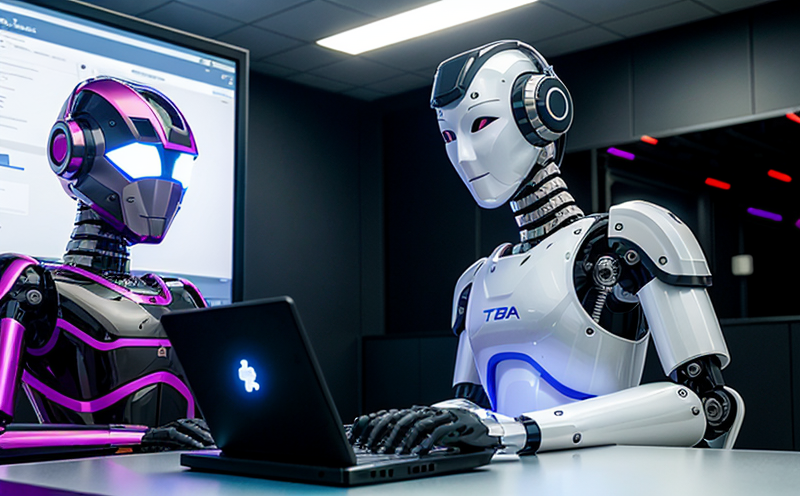ISO/IEC 24745 Biometric Data Protection in Human–Robot Interfaces
The ISO/IEC 24745 standard addresses the critical issue of biometric data protection within human-robot interfaces, ensuring that sensitive personal information is handled securely. This standard is particularly important as robotics and artificial intelligence (AI) systems become more integrated into daily life, from industrial applications to healthcare environments.
The primary goal of ISO/IEC 24745 is to establish a framework for the protection of biometric data used in human-robot interactions. This involves defining security requirements that must be met by systems handling such data. The standard focuses on preventing unauthorized access, ensuring data integrity, and maintaining privacy while facilitating the secure exchange of information between humans and robots.
Compliance with this standard is crucial for organizations operating in sectors like healthcare, manufacturing, and public services where human-robot interfaces are employed. By adhering to ISO/IEC 24745, these entities can demonstrate their commitment to data security and privacy, thereby enhancing trust and compliance.
The testing process under this standard involves multiple steps, including initial risk assessment, identification of critical biometric data points, implementation of secure data handling practices, and regular audits. Testing laboratories must ensure that all systems meet the stringent criteria outlined in ISO/IEC 24745 to prevent potential security breaches.
Robots equipped with human-robot interfaces often collect personal information such as fingerprints, facial recognition data, or voice patterns. Proper handling of this data is essential for maintaining user trust and legal compliance. ISO/IEC 24745 provides a comprehensive approach to securing these sensitive biometric records.
The standard emphasizes the importance of strong encryption methods, access controls, and audit trails to protect against unauthorized access and data tampering. It also mandates regular security updates and patches for systems handling biometric data to mitigate risks associated with evolving threats.
Compliance involves not only technical measures but also procedural aspects such as employee training on data protection protocols and establishing clear policies regarding the use of biometric information. Laboratories conducting tests under this standard must ensure that all stakeholders understand their roles in safeguarding sensitive personal data.
Scope and Methodology
The scope of ISO/IEC 24745 encompasses the entire lifecycle of biometric data protection within human-robot interfaces. This includes initial design, development, deployment, operation, maintenance, and decommissioning phases.
- Initial Design: Ensuring that system architecture incorporates security measures from the outset.
- Development: Implementing secure coding practices to prevent vulnerabilities in software.
- Deployment: Configuring systems to meet the requirements specified by ISO/IEC 24745.
- Operation: Monitoring system performance and responding to incidents promptly.
- Maintenance: Regularly updating systems to address new security threats.
- Decommissioning: Safely disposing of data and hardware components that have been used for biometric purposes.
The methodology involves a series of tests designed to evaluate the robustness of biometric data protection measures. These include penetration testing, vulnerability assessments, and simulation exercises aimed at identifying potential weaknesses in system security.
Testing laboratories play a crucial role in this process by providing independent validation through rigorous testing procedures. They ensure that all aspects of ISO/IEC 24745 are adhered to during every phase of the lifecycle.
Industry Applications
| Application Area | Description |
|---|---|
| Healthcare Robotics | In healthcare settings, robots may assist in patient care by collecting biometric data. Ensuring secure handling of this information is paramount. |
| Manufacturing Robots | Robots used in manufacturing processes often collect data for quality control and performance optimization. ISO/IEC 24745 ensures the security of this data. |
| Security Robotics | In security applications, robots may monitor or assist personnel by collecting biometric data. Compliance with ISO/IEC 24745 is essential for operational integrity. |
| Service Robots | Service robots interact closely with users in public spaces. Proper protection of collected biometric data enhances user confidence and trust. |
The applications listed above illustrate the diverse range of industries where ISO/IEC 24745 plays a vital role in ensuring secure handling of biometric data within human-robot interfaces. By adhering to this standard, organizations can protect sensitive information and maintain compliance with international regulations.
Quality and Reliability Assurance
- Data Integrity: Ensuring that biometric data remains accurate and unaltered throughout its lifecycle.
- Vulnerability Assessments: Regularly evaluating systems for potential security flaws.
- Penetration Testing: Simulating attacks to identify and mitigate vulnerabilities.
- Audit Trails: Maintaining detailed logs of all actions taken with biometric data.
- Employee Training: Providing comprehensive training for personnel involved in handling biometric information.
- Policy Development: Establishing clear guidelines and procedures for the use and protection of biometric data.
The quality assurance process under ISO/IEC 24745 ensures that all systems meet stringent requirements, thereby enhancing reliability and trust. Regular audits and updates are conducted to maintain compliance with international standards.





